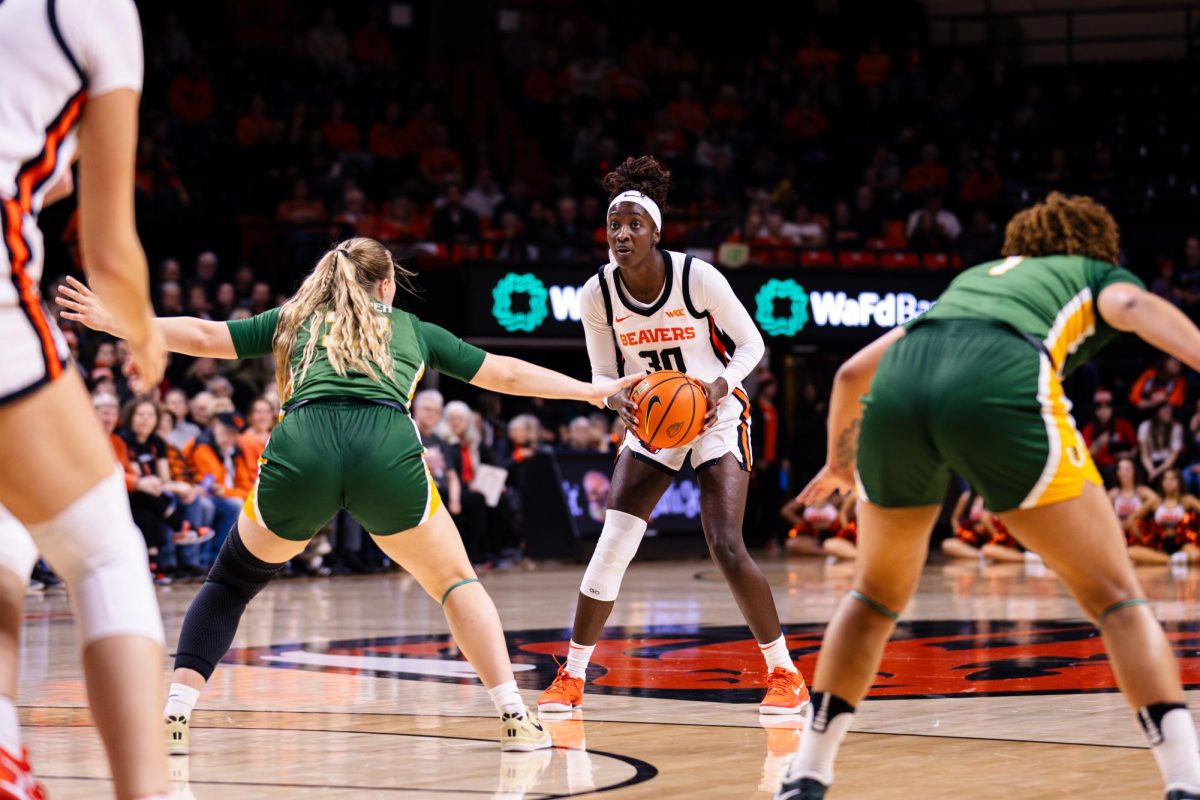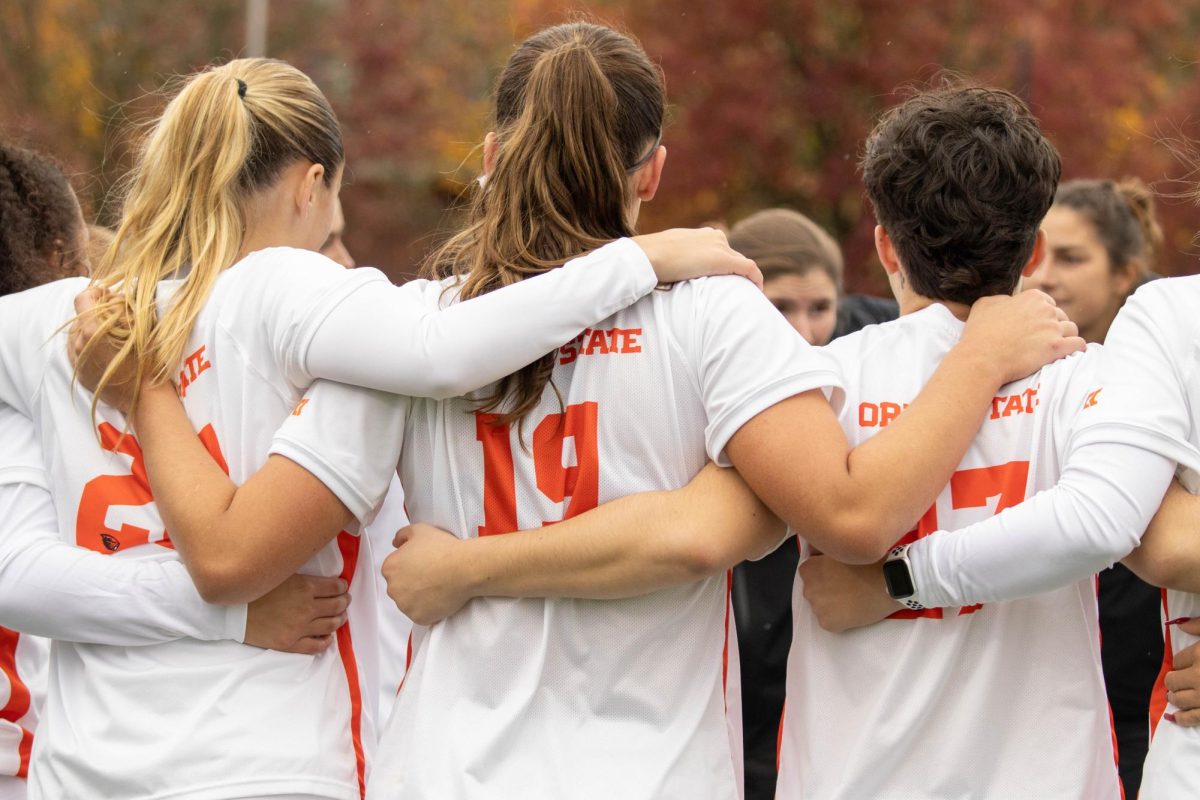They say “If you can’t take the heat, get out of the kitchen,” but chefs and farmers are dying to get their hands on these low-heat habanero peppers.
Over the past 25 years, Oregon State University Professor of Vegetable Breeding and Genetics Jim Myers has been experimenting with growing less pungent habanero peppers that are better adapted to growing in North America. The fruit of his labors has resulted in the Notta Hotta and the Mild Thing.
On the Scoville scale of hotness, Myers’ peppers rank at about 500 to 1,000 units.
“To give you a kind of benchmark, regular habaneros are 100,000 to 300,000, and the hottest, like the Carolina Reapers, are about 1.5 to 2 million Scoville,” Myers said. “I would compare (500 to 1,000 Scoville) to the level you might find in an Anaheim-type pepper or poblano.”
According to Myers, the Notta Hotta and Mild Thing both have fruity and tropical aromas and flavors.
Myers said that, while his peppers are not currently for sale, he is in talks with various seed companies, and thinks there will be a limited availability of low-heat habanero seeds for sale next year.
“It was one of those projects I fell into backwards,” Myers said. “I’ve always liked these kinds of peppers, but the pungency is pretty overwhelming.”
According to Myers, he was teaching a class on vegetable systematics when he first came across a mild variety of habanero.
“For that class, I’ll grow out 25 to 30 pepper varieties,” Myers said. “One of them I found for that class was a mild habanero that was developed by Kevin Crosby down at Texas A&M University. I grew that out one year, and the next year when I grew it, it had outcrossed with the hot habaneros.”
When Myers discovered this, he decided to start selecting for a flavor he liked.
“That started that project over the next few years when I started selecting for the mild form. I was also selecting for better adaptation to Oregon production.”
Originally domesticated in the Amazon region of South America, habaneros prefer a tropical climate, with a lot of heat and long growing seasons. By selecting for better adaptation to a shorter growing season as well as for cold, Myers said that his peppers mature one to two weeks earlier than a regular habanero.
According to Myers, the Notta Hotta is a more broadly adapted variety that does well in the Midwest whereas the Mild Thing is more adapted to the Pacific Northwest and is a little more flavorful than the Notta Hotta.
OSU Professor of Practice and Founder of the Culinary Breeding Network Lane Selman said she met Myers in 2011.
“I was talking to (Myers) about his project that he was working on,” Selman said. “But one thing he didn’t really know what to choose for was what the shape was, the size, the color, flavor, that sort of thing.”
Through her culinary breeding network, Selman said she asked about 25 chefs for their input on the low-heat habaneros.
“I would ask (the chefs) which (peppers) they like for the flavor and like working with in the kitchen,” Selman said.
According to Selman, the chefs have been doing some “wild” things with the Notta Hotta and Mild Thing.
“(The chefs) are really excited about it, not having the heat, because then you can really access the flavor, the fruitiness and the tropical flavor that we don’t really associate much with temperate areas like the Pacific Northwest,” Selman said.
According to Selman, the chefs have been creating things she didn’t know were possible with peppers.
“One of the chefs actually made a sherbet with (the peppers) one time, another chef made a soda,” Selman said. “I think it’s just it kind of inspires them to do something experimental and unexpected because the lack of heat is very unexpected. Because you taste it, and it’s like you’re waiting for it. You’re kind of anxiously going, ‘Oh God, when is it going to get hot?’ But it doesn’t get hot, you know?”
Owner of Portland company Hot Mama Salsa and namer of the Notta Hotta and Mild Thing Nikki Guerrero met Myers through Selman’s culinary breeding network.
“They asked if I could make a sauce to showcase (the peppers) at one of the Variety Showcase events that the Culinary Breeding Network hosts. I made a mild sauce and fell in love with Jim’s pepper work right away,” Guerrero said.
Guerrero said that she likes Myers’ peppers for their versatility and potential to reach a wider audience.
“I have already talked with my farmer about growing Mild Thing and Notta Hotta for next year and plan to use them both in our seasonal fresh salsa specials and in a chili oil,” Guerrero said.


















































































![Newspaper clipping from February 25, 1970 in the Daily Barometer showing an article written by Bob Allen, past Barometer Editor. This article was written to spotlight both the student body’s lack of participation with student government at the time in conjunction with their class representatives response. [It’s important to note ASOSU was not structured identically to today’s standards, likely having a president on behalf of each class work together as one entity as opposed to one president representing all classes.]](https://dailybaro.orangemedianetwork.com/wp-content/uploads/2025/03/Screenshot-2025-03-12-1.00.42-PM-e1741811160853.png)



























